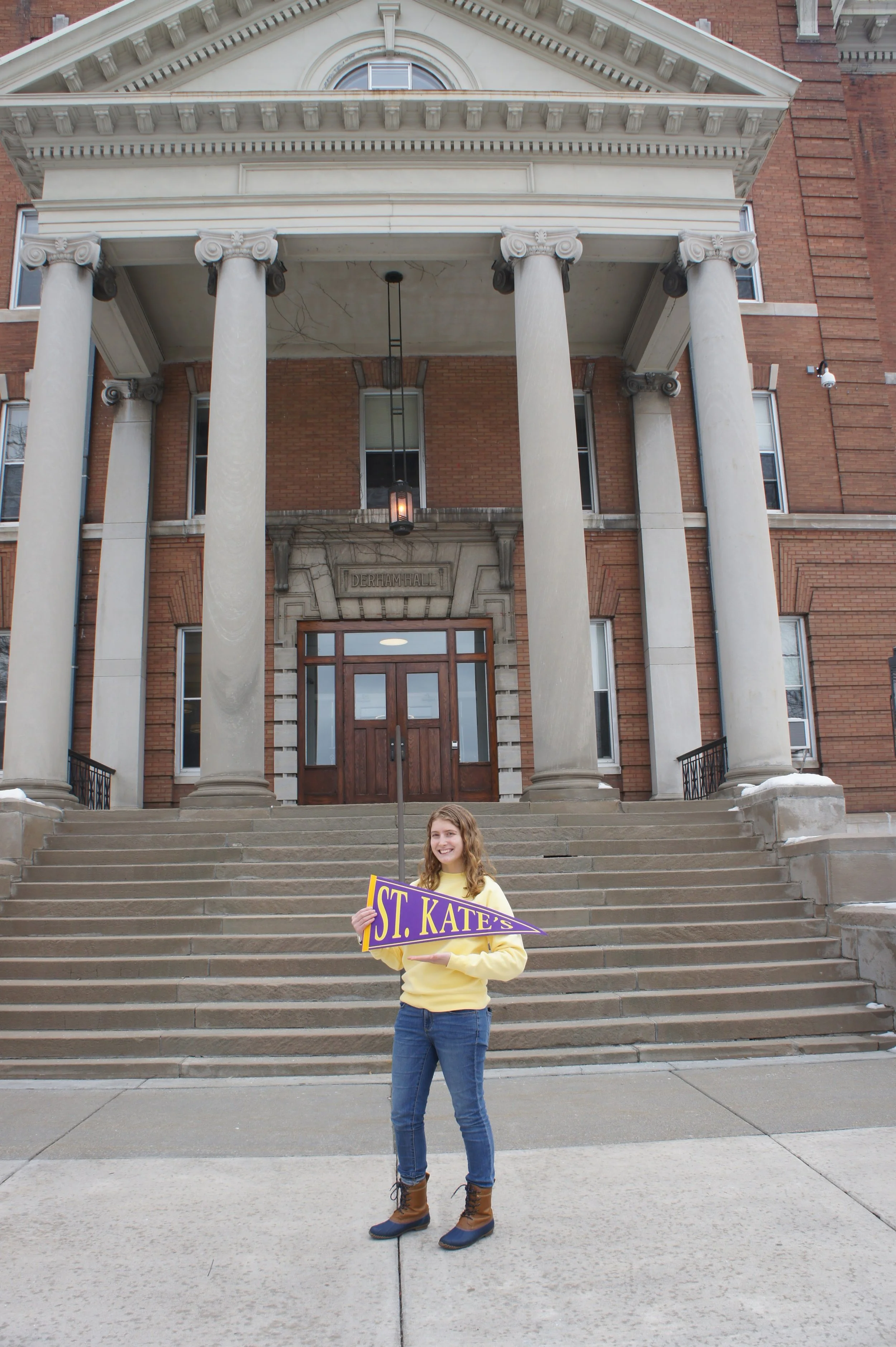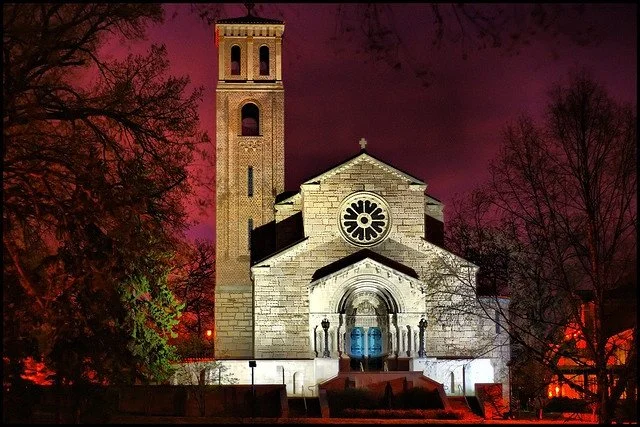Special Edition Fall 2021: Qistory
A (brief) reflection of Queer History at St. Kate’s
Queer, a proper noun, is an umbrella term. It represents everyone who lives outside of heterosexual or cisgender identity lines. If you do not identify as straight (attracted to the opposite sex) or with the sex you were assigned at birth (male, female, or unassigned) then Queer might be an identity you can find comfort in. However comfortable this term may be for some folks now, it has had a complex history. While the word’s usage is steadily shifting from insulting to inclusive and even sometimes empowering, thank you, Lil Nas X, it’s a general consensus that you should not use it if you don’t associate with it. Translation: if you are straight, this is not your word.
LGBTQIA+ is a popular initialism that anyone can utilize to refer to Queer folks. The L stands for Lesbian, the G for Gay, B for Bisexual, T for Transgender, and the Q is for, you guessed it, Queer. The I represents the Intersex community, A is for Asexual, and the + is for everyone who has a sexual orientation or gender identity that is not included in the seven-letter initialism, such as Demisexual, Nonbinary, and so on.
But this abbreviation and the communities within it sometimes have boundaries of their own.
“The ABCs of LGBTQIA+” by Michael Gold, originally published in the New York Times in 2018 is a lovely article, but the numerous communities, subcommunities, and identities can become overwhelming. Queer folks often forget that sexuality and gender are spectrums while searching for the perfect term that suits them, leading to stress and anxiety. The more recent social climate is deconstructing the need for labels and warming up to the idea that humans cannot be explained with a single term. This is one of many reasons the word Queer and the St. Kate’s PRIDE club has resurfaced.
Teaching students to lead and influence
During the COVID-19 pandemic, PRIDE club encountered some unexpected circumstances, the most notable being that the board's seniors graduated. The club is currently electing a new board and ensuring that it can remain active for everyone going forward. Unfortunately, this is not the first time PRIDE has faced a major setback.
In a 2005 Wheel article by Lauren Dees, Heather T. Johnson noted censorship from administration and visibility as two major challenges club members were navigating.
“Our name was a concern to the administration because it might be related to gay pride,” Johnson explains in the brief article. Queer students and activities were being discussed in important conversations, but representation appeared slim. And pride is pride, whether it is gay or not.
In my Piscean eyes, history is past and present. Contemporary challenges are not necessarily short-term, nor do they have quick solutions. I often wonder if the university spoke with Queer students or staff when they created their Transgender and Nonbinary Admission Policy in 2018.
“It excludes Trans men,” says Ryder Wolfe, “and leaves me wondering if I would have been accepted if I transitioned before coming here.” Ryder is a third-year business administration & marketing major who uses he/him pronouns. The policy has been criticized for being contradictory, confusing, and even offensive. It emphasizes inclusivity while simultaneously erasing certain Queer communities. If I can be frank: it reads like a cisgender person wrote it.
“Teaching women to lead and influence” is a phrase often heard at St. Kate’s. Many students recognize this part of the university’s mission statement and use of gendered language, but some think it is time for a change.
“I love that St. Kate’s wants to empower their students, but they need to understand that not everyone who goes here is cisgender,” Ryder explains. The gendered language also leads to Queer students being regularly misgendered by staff and faculty. Ryder notes that when his professors lack attentiveness, it is difficult for him to come to class. “All St. Kate’s students should be able to feel safe at the school they attend, not just those who are cisgender,” says KK, a first-year psychology major who uses she/they pronouns.
Identifying an overall lack of visibility for queer students and alumni, KK shares her hope that PRIDE will “help queer St. Kate students feel more comfortable at their school” and “spread more information.” They also believe little things are a good place to start.
Changing the gender and sexuality assumptions used in weekly newsletters or flyers can create more inclusive environments for Queer students. Residence Life’s Katie Girl segment is a grand idea that would be much more entertaining for everyone to read if “girl” was replaced by something more inclusive.
Where do we go from here?
While names and pronouns are subject to change, their value is not. Fair warning if you want to update your preferred name on your university Gmail account: it won’t be easy. I have done it twice, and it has been an unnecessary hassle both times. Ryder believes simplifying the process of updating personal information would allow St. Kate’s to better support its Queer students, and let’s be honest, it shouldn’t be so tedious to begin with.
So what does pride mean to these students? To KK, pride is “feeling proud & comfortable showing all aspects of yourself.”
To Ryder, pride is “the ability to love myself” and “be free amongst my peers and community.” This might just be my intuition talking, but I believe we each desire acknowledgment, respect, and love. When there is a continued lack of support for a marginalized community at a university that places social justice at the forefront of its values, voices and stories go unacknowledged, and students are forced to validate themselves time and time again. After a while, this can lead to feelings of loneliness or even resentment. Something has to change.
If St. Kate’s will continue admitting and benefitting from the magical work Queer students do, they are responsible for stepping up and ensuring said students are cared for. The point of view that cisgender heterosexual females are the only people at this university seems to have (very) deep roots. But times have changed. St. Kate’s has always responded to the needs of our time. Currently, the needs of the Queer community are waiting to be met.
When asked to make the university’s mission statement more inclusive, Ryder responds, “St. Catherine University’s mission is a reflection upon the influence of the historical women who shaped our values. We as a university strive to provide an education to women, non-binary, and transgender individuals to lead and influence the world.” This is a glorious example of how we can preserve the university’s unique history without erasing or neglecting a community that has always been present at this institution and deserves just as much recognition and care as any other.
KK would love a PRIDE center on-campus, “especially considering the emphasis on being inclusive of queer students in St. Kate’s policies.”
Ryder says, “If we had a meeting space like SCISO or MIPS that would be awesome.”
When I dream of a PRIDE center, a few things come to mind: a large updated flag, colorful flyers with weekly events, a shelf for Queer media, Harley Quinn and Poison Ivy wall art (provided by your truly,) avocado pillows, and a group of Queer folks and allies enjoying each other’s company at all hours of the day.
When I dream of a Queer-conscious campus, I see hope.






